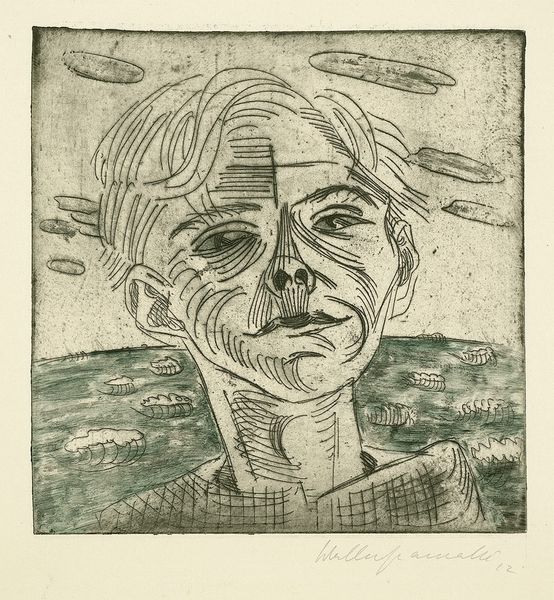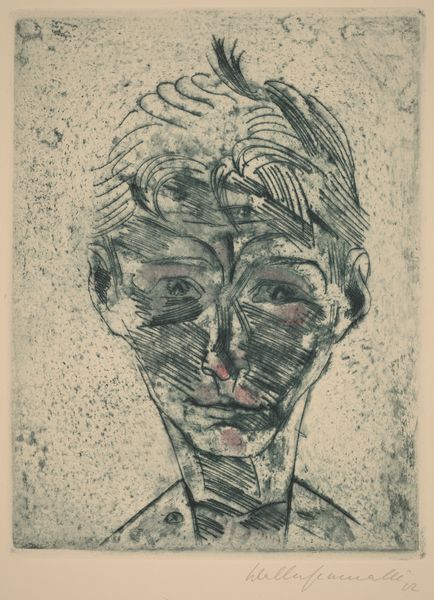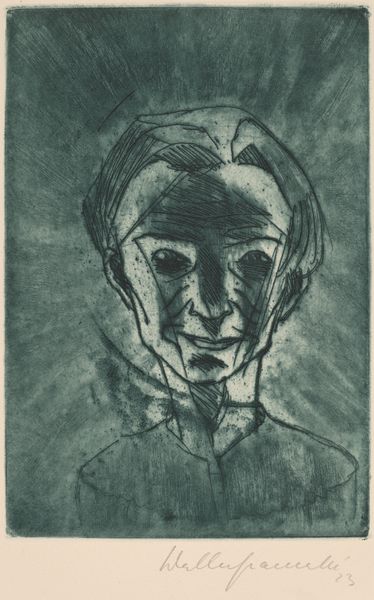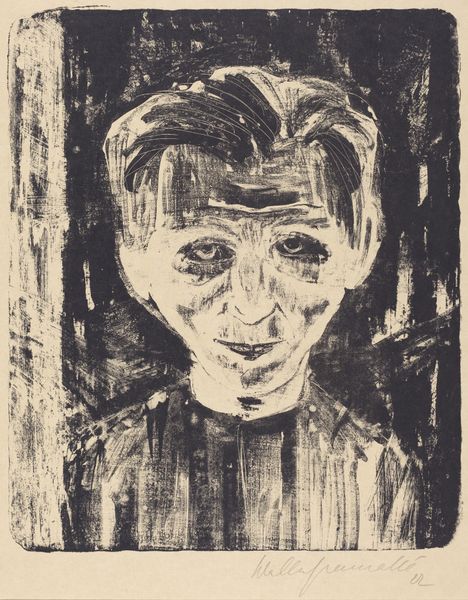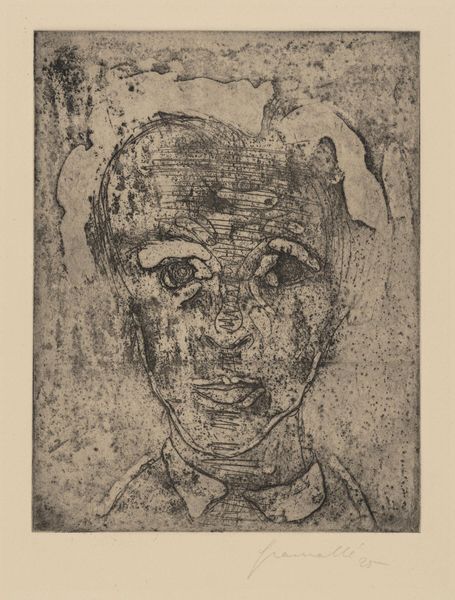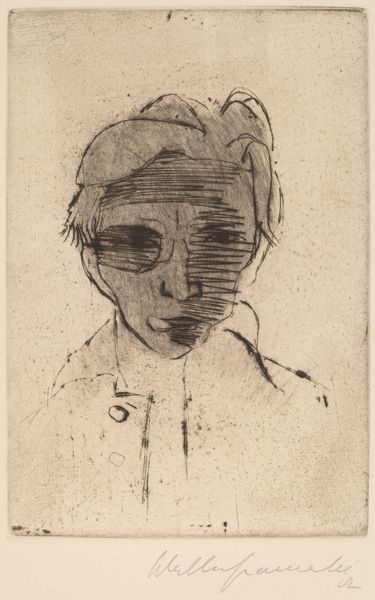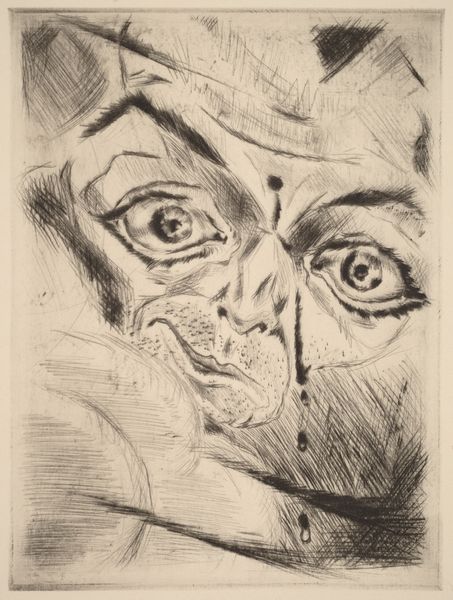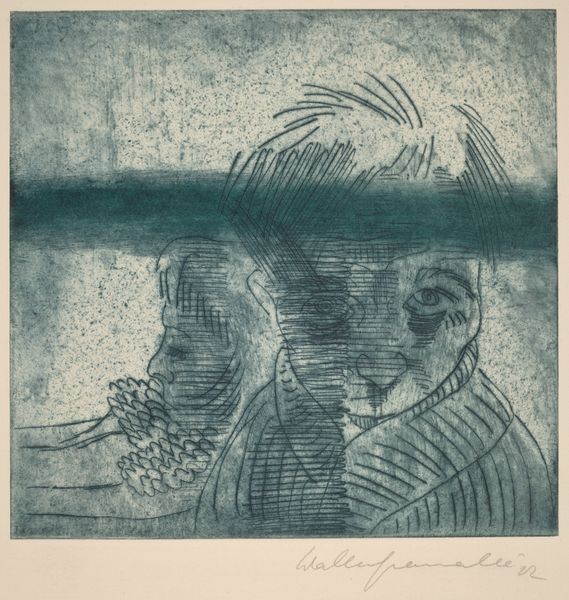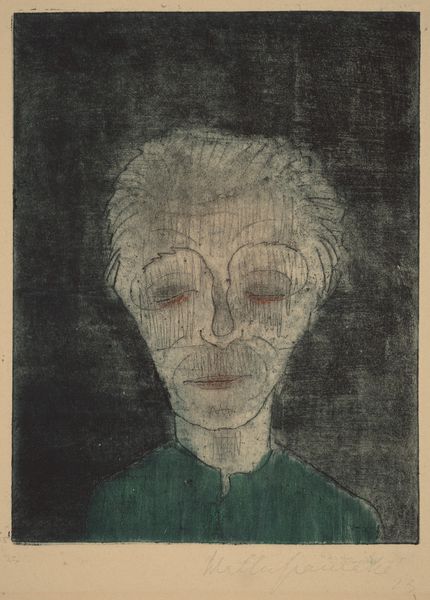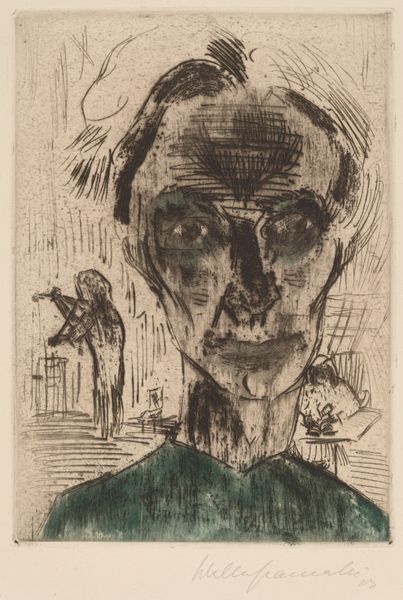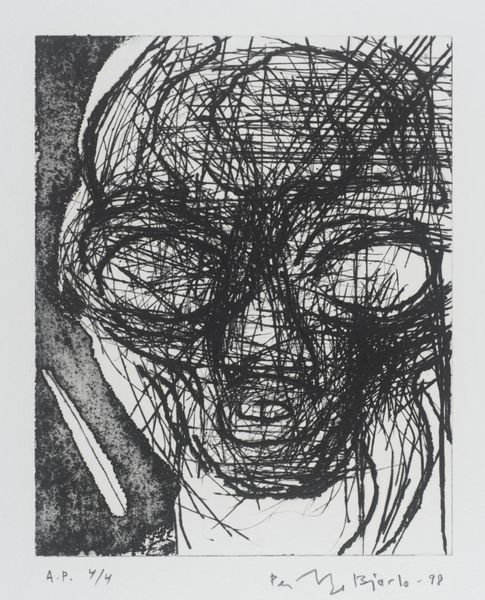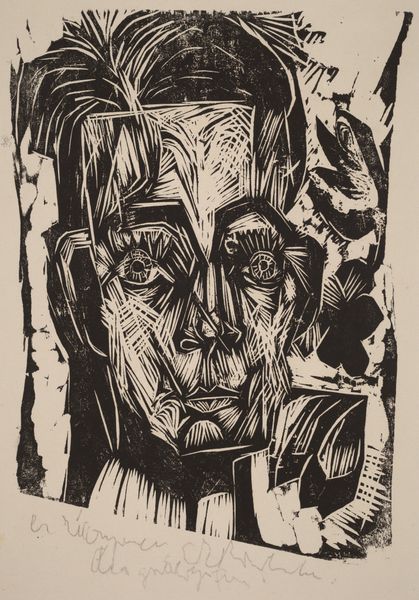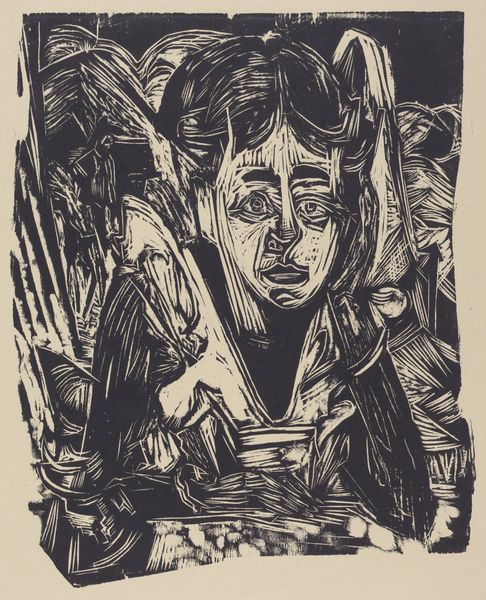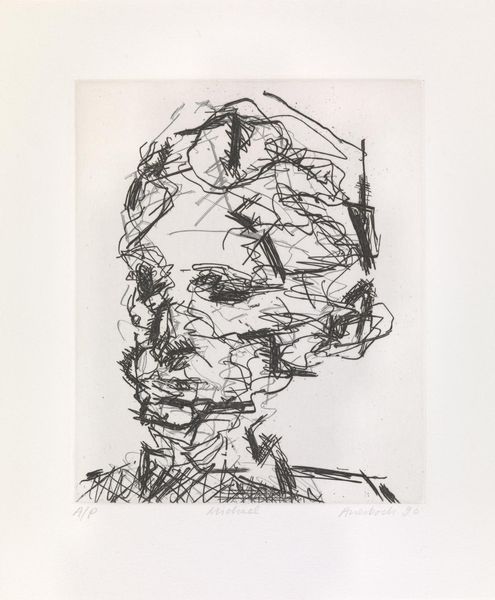
Man at the Sea, Self-portrait (Mann am Meer, Selbstporträt) 1923
0:00
0:00
print, etching
#
portrait
#
self-portrait
# print
#
etching
#
pencil sketch
#
landscape
#
expressionism
Dimensions: sheet: 53.5 × 38 cm (21 1/16 × 14 15/16 in.) plate: 25 × 24.2 cm (9 13/16 × 9 1/2 in.)
Copyright: National Gallery of Art: CC0 1.0
This is Walter Gramatté’s self-portrait, made using etching, a printmaking technique involving acid. The acid bites into a metal plate, creating lines that hold ink. When printed, these lines produce a characteristic raised texture, which you might notice if you could run your fingers over the surface. The labor-intensive etching process results in multiples of the image, which democratizes the art and separates it from unique works like paintings or sculptures. The green aquatint, an etching variation, adds shading and depth to the sea, contrasting with the stark lines of the face. Gramatté's expressive lines, achieved through careful manipulation of the etching needle, convey a sense of introspection. His engagement with printmaking highlights the artist's connection to both the history of fine art and the broader world of craft and production. Consider how Gramatté's choice of printmaking, as a reproducible medium, challenges the notion of the artist as a solitary genius, instead emphasizing the role of skilled labor and the potential for wider dissemination of art.
Comments
No comments
Be the first to comment and join the conversation on the ultimate creative platform.
